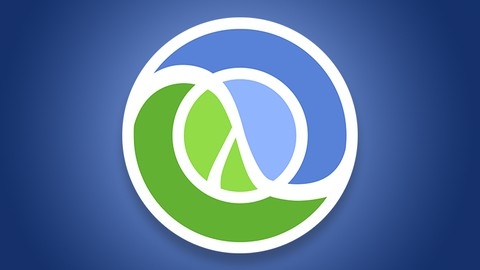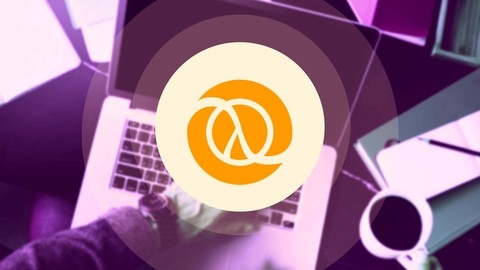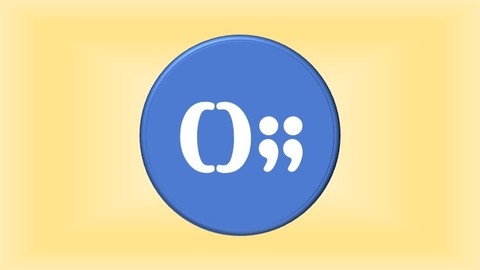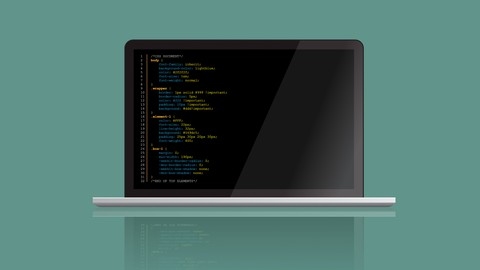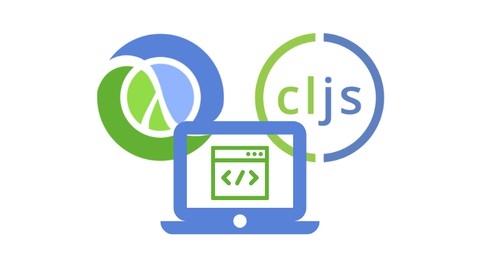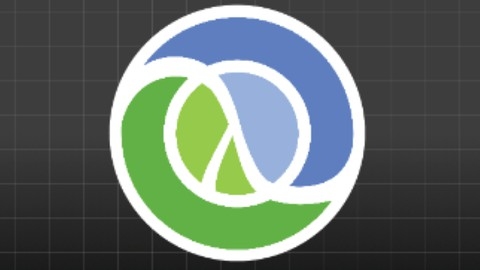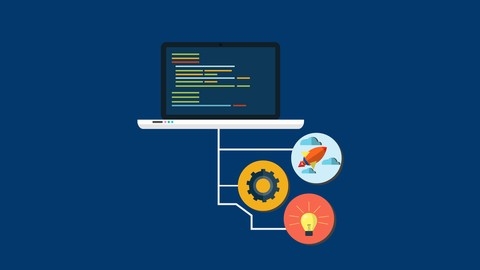If you’re looking for the best Clojure courses on Udemy, you’ve come to the right place.
Clojure, a modern Lisp dialect, has gained popularity for its simplicity, power, and versatility, making it an attractive choice for developers seeking to expand their skillset.
In this blog post, we’ll explore some of the top-rated Clojure courses on Udemy, providing you with the resources you need to master this functional programming language.
Clojure: The Complete Beginner’s Guide
You’ll start by learning what Clojure is and setting up the necessary tools like Java, Leiningen, and IntelliJ on your Mac or PC.
The course then dives into the REPL (Read-Eval-Print Loop), which is a powerful tool for exploring and experimenting with Clojure code.
From there, you’ll learn the language basics, including functions, data types, variables, operators, and compound data types like vectors and maps.
The course covers fundamental concepts like conditionals, loops, atoms (Clojure’s approach to managing state), sequences, and StructMaps (a way to define data structures).
You’ll also learn about destructuring, which is a concise way to bind values to names, and exception handling.
As you progress, the course adds complexity by introducing namespaces, macros (a way to extend the language), watchers (for observing changes to atoms), agents (for managing state and performing asynchronous actions), and reference values (another way to manage state).
Throughout the course, you’ll have coding challenges to reinforce your learning, with solutions provided.
The course covers a wide range of Clojure concepts, from the basics to more advanced topics like macros and agents.
You’ll learn how to set up your development environment, work with the REPL, and write idiomatic Clojure code.
Learning Clojure
The course starts by introducing you to the basics of Clojure.
You’ll learn about the different data types, control flow structures, and functions in Clojure.
The course then dives into working with collections, recursion, and structuring Clojure projects using Leiningen, a popular build tool.
You’ll also learn how to write tests with Clojure.test, interact with Java code, and even generate Java classes from Clojure.
The course covers concurrency in Clojure, including basic concurrency concepts, Software Transactional Memory (STM) with atoms, refs, and agents, and working with core.async.
To help you write safer software, the course covers types, records, multimethods, and protocols.
You’ll learn how to interact with data stores by reading and writing files, working with JDBC, and writing web applications with Clojure.
The course teaches you how to handle HTTP requests and responses using Ring, a Clojure web applications library.
You’ll learn routing with Compojure, rendering HTML with Selmer, Hiccup, and Enlive, and implementing dependency injection for persistence.
Finally, you’ll put everything together by building a complete web application using the concepts and libraries covered throughout the course.
Building Microservices with Clojure
You’ll start by setting up your development environment, including installing essential tools like Leiningen, LightTable, and the required dependencies.
The course introduces you to the sample application, which serves as a practical example throughout the lessons.
You’ll learn about the tech stack and toolchain, including Ring, Pedestal, and Heroku for deployment.
With the basics covered, you’ll dive into building functional microservices.
You’ll learn how to create GET and POST endpoints, handle parameterized requests, and work with JSON data structures.
The course also covers persistence, allowing you to interact with databases and store application data.
As you progress, you’ll explore more advanced topics like securing your endpoints with API keys, making HTTP requests from within your application, and working with XML data.
The course also touches on Java interoperability, allowing you to leverage existing Java libraries in your Clojure code.
Throughout the lessons, you’ll use LightTable and the nREPL to make live code changes, streamlining the development process.
The course emphasizes hands-on learning, guiding you through practical examples and exercises to reinforce the concepts.
Clojure For Beginners (Programming Language)
You will start by learning how to set up an online IDE using Replit and write your first “Hello World!” program.
From there, you will dive into the fundamentals of Clojure, including variables, data types, and formatted output.
The course covers various data structures in Clojure, such as lists, sets, vectors, and maps.
You will learn how to work with these structures and understand their differences.
Functions are a crucial part of Clojure, and the course dedicates several sections to teaching you how to define and use them, including anonymous functions.
You will also learn about control structures in Clojure, such as conditionals (if statements, cond, and when), relational and logical operators, and loops (do times, loop loop, and doseq).
The course covers ranges, map, reduce, and filter functions, which are essential for working with collections in Clojure.
The course introduces you to macros, a powerful feature of Clojure that allows you to extend the language itself.
You will learn about macro threading and how to use it with strings, numbers, and lazy sequences.
The course also covers the let function and its use with hashmaps.
Throughout the course, you will work with various libraries and functions provided by Clojure, such as the string library, math library, and literals.
Clojure Introduction: Learn Functional Programming
The course starts with an introduction to Clojure, providing examples and explaining the syntax.
You’ll learn about variables, functions, and lists, which are fundamental concepts in Clojure.
Next, you’ll dive into namespaces, which are used to organize code.
The course covers control flow statements like if, when, and case, allowing you to control the execution of your code.
You’ll then explore various data structures in Clojure, including vectors, sets, sequences, and maps.
You’ll learn how to work with these data structures, including how to remove elements from sequences.
The course also introduces you to macros, which are a powerful feature in Clojure that allows you to extend the language itself.
You’ll learn about different types of loops in Clojure, such as loop-recur, doseq, and dotimes.
These loops are essential for iterating over collections and performing repetitive tasks.
Additionally, the course covers atoms, which are used for managing state in Clojure.
You’ll learn how to create, update, and work with atoms.
The course also covers higher-order functions like map, filter, and apply, which are essential for functional programming in Clojure.
You’ll learn how to use these functions to transform and manipulate data.
Finally, the course introduces the concept of delay, which is used for lazy evaluation in Clojure.
Make a Web App with Clojure - Foundational Basics
This course starts by introducing Clojure and explaining why it’s a powerful language for web development.
You’ll then set up the necessary tools and learn foundational concepts like debugging and using the terminal.
The course ensures you have the prerequisites installed, including Emacs, a popular text editor for Clojure development.
You’ll dive into creating basic websites and blogs using Cryogen, a static site generator written in Clojure.
This will give you hands-on experience with the language before moving on to dynamic web applications.
A key part of the course is understanding the main components of a web app and building your first basic app with Luminus, a popular Clojure web framework.
You’ll learn about file structures, namespaces, and how to customize your web app.
This practical approach will help you grasp the concepts by actually building and modifying real applications.
Throughout the course, you’ll work with essential Clojure tools and libraries like Emacs, Luminus, and Cryogen.
Clojure programming Interview Prep: 300+ Questions & Answers
The course starts by teaching you the basic syntax of Clojure programming.
You’ll learn how to write code and understand the fundamental structure of the language.
From there, you’ll dive into functions, which are essential building blocks in Clojure.
The course covers sequential collections like lists and vectors, as well as hashed collections like maps and sets.
As you progress, you’ll learn about flow control structures like conditionals and loops, which allow you to control the execution flow of your programs.
The course also covers namespaces, which help you organize your code and manage dependencies.
After mastering the fundamentals, the course delves into advanced topics in Clojure programming.
These advanced topics are split into two parts, covering more complex concepts and techniques that will deepen your understanding of the language and enable you to tackle more challenging problems.
Throughout the course, you’ll gain hands-on experience with Clojure programming, working on exercises and projects that reinforce the concepts you’ve learned.
Clojure - from beginner to advanced
The course starts by introducing you to Clojure, a modern Lisp dialect that runs on the JVM.
You’ll learn about its history and install it on your preferred operating system - Windows, MacOS, or Linux.
Once you have Clojure set up, the course dives into the language basics.
You’ll learn about syntax, expressions, variables, functions, and data types like numbers, strings, and Clojure’s powerful data structures.
The course emphasizes Clojure’s functional nature and immutable data, which are core concepts.
From there, you’ll explore language structures like control flow with if/case/cond, loops, exception handling, and namespaces.
This section also covers functional programming basics like destructuring, threading macros, recursion, and closures.
The course then moves into more advanced topics.
You’ll learn about dynamic and lexical scope, Clojure’s read-eval-apply model, and writing your own macros.
Object-oriented programming is covered through protocols and multimethods.
You’ll also learn about transducers and concurrent programming.
But the real value comes from diving into Clojure’s rich ecosystem and libraries.
You’ll learn how to interoperate with Java, handle file I/O, manage dependencies, process JSON, build HTTP clients and servers, use templating for HTML, and integrate with databases like Postgres and MongoDB.
The course even covers testing and using a Go-like concurrency library.
To solidify your learning, you’ll build a real-world project - a Compojure web application backed by MongoDB for managing articles.
You’ll create pages for listing, creating, and editing articles, add login functionality, use Hiccup for templating, style with CSS and Markdown, and package it all with Docker.
Clojure Fundamentals For Beginners
The course starts by introducing you to Clojure concepts, explaining why Clojure is a compelling choice, and showcasing its success stories.
You’ll then set up your development environment using either Leiningen or Gradle, and learn how to package Clojure applications.
From there, you’ll dive into the language fundamentals, including basic syntax and core functions.
The course also covers advanced concepts like macros, which are a powerful feature of Clojure.
A major focus is functional programming with Clojure.
You’ll learn how to write pure functions using immutable data structures, implement recursive data flow, and compose functions together.
Concurrency is a strength of Clojure, and the course dedicates a section to it.
You’ll explore Clojure’s memory model and concurrency tools like atoms, agents, refs, and vars.
The course also covers the core.async library for handling processes.
The syllabus covers building real-world applications with Clojure, including integrating with Java and JavaScript.
You’ll learn how to develop web applications using Clojure as well.
Functional Programming and Concurrent Systems with Clojure
This course offers a series of practice tests to assess your knowledge of functional programming and concurrent systems using Clojure.
You will encounter scenarios related to Clojure programming, where you must choose the correct answer from multiple options.
These tests cover essential concepts like immutable data, higher-order functions, and concurrency control.
The course includes six practice tests, each followed by detailed explanations to reinforce your understanding.
By taking these tests, you will solidify your grasp of Clojure’s key principles, such as functional programming and concurrent systems.
With each practice test, you will dive deeper into Clojure’s world, encountering real-world scenarios that challenge your problem-solving skills.
The multiple-choice format allows you to test your knowledge effectively, while the explanations provide valuable insights into the reasoning behind each correct answer.
